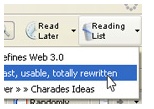HU – Brain Wash
Another political party brain washing !

Another political party brain washing !

The new UN data access system (UNdata) will improve the dissemination of statistics by UNSD to the widest possible audience. An easy to use data access system was developed that meets UNSD’s vision of providing an integrated information resource with current, relevant and reliable statistics free of charge to the global community.
Subsequent stages of the development of the UN data access system will extend to UN system data as well as to data of national statistical offices – providing the user with a simple single-entry point to global statistics.
Marhaba is Good Morning in common Lebanese slang, Marhaba is a travel agency in Tallinn, Estonia.


Maxime Chaya is the first Lebanese to climb Everest on May 15th, 2006, 5:50 a.m. local time, as the last of his Seven Summits.
Maxime Chaya completed the second pole (South Pole) of his Three Poles Challenge on December 28, 2007. He called Lebanese Prime Minister Fouad Siniora from there and expressed his wishes that all Lebanese pursue their goals in life just as he did. If he completes his third pole (North Pole) as scheduled in 2009, he will have been only the 14th person in the world to have achieved the Grand Slam – 3 Poles & 7 Summits.
Maxime Chaya became a Lebanese national hero when he raised, for the first time in history, his country’s name to the highest place on earth.
Maxime, was officially nominated a Seven Summiteer after reaching the highest summit in the world, Mount Everest.
Check Maxime’s Blog here: TheThreePoles.com
 Xerox announced today they’re junking their 40 year old logo for a new “modern” logo, complete with bouncing ball icon.
Xerox announced today they’re junking their 40 year old logo for a new “modern” logo, complete with bouncing ball icon.
Xerox unveiled what it says is the most sweeping transformation of its corporate identity since it dropped “Haloid” from the Haloid Xerox name in 1961. In a broadcast to employees, it announced that it would retire the staid red capital X that has dominated its logo for 40 years in favor of what Richard Wergan, vice president of advertising, calls “a brand identity that reflects the Xerox of today.”
The new logo consists of a bright red lowercase “xerox” that sits alongside a red sphere sketched with lines that link to form a stylized X. According to Anne M. Mulcahy, Xerox’s chief, that little piece of art represents the connection to customers, partners, industry and innovation.
Xerox and Interbrand, a brand consultancy that is a unit of Omnicom Group, spent more than 18 months interviewing some 5,000 people across the globe about their associations with the Xerox name. Then they set about figuring how they could best retain the nice things it stands for (dependability and stability), jettison the not-so-nice (formal, somewhat stodgy) — and, most importantly, add in such attributes as modern, innovative and flexible.
The new branding will go live on the Xerox Web site today but Xerox said it expected that it would take as long as two years to finish converting all of its packaging, marketing materials, office stationary and signs to the new look.

Box.net just made a new extension that backs up and synchronizes your Firefox bookmarks.
https://addons.mozilla.org/en-US/firefox/addon/5525
Its very simple, you can set it to auto update your bookmarks so they are synchronized wherever you go, or you can manually backup and restore bookmarks. The bookmarks are then stored on Box.net and can be accessed from anywhere for easy downloading.
The Guy Kawasaki Theory of Schmoozing version 1.0 was ad hoc: get to know the people that you need for a specific deal. It was short-term and focused.Version 2.0 is ad infinitum–maybe even ad nauseam. It’s taken me twenty years, but I’ve figured out that it’s much easier to make a sale, build partnerships, create joint ventures–you name it–with people that you already know than with people you just met.
The key is to establish a relationship before you need it. And this is why I’d like to provide the art of schmoozing.
1. Understand the goal. Darcy Rezac in his book, The Frog and the Prince, wrote the world’s best definition of schmoozing: “Discovering what you can do for someone else.” Herein lies eighty percent of the battle: great schmoozers want to know what they can do for you, not what the you can do for them. If you understand this, the rest is just mechanics.
2. Get out. Schmoozing is an analog, contact sport. You can’t do it alone from your office on the phone or via a computer. You may hate them but force yourself to go to tradeshows, conventions, and seminars. It’s unlikely that you’ll be closing a big order with someone you met online at MySpace or via Skype. Get out there and press flesh.
3. Ask good questions, then shut up. The mark of a good conversationalist is not that you can talk a lot. The mark is that you can get others to talk a lot. Thus, good schmoozers are good listeners, not good talkers. Ask softball questions like, “What do you do?” “Where are you from?” “What brings you to this event?” Then listen. Ironically, you’ll be remembered as an interesting person.
4. Unveil your passions. Only talking about business is boring. Good schmoozers unveil their passions after they get to know you. Great schmoozers lead off with their passions. Your passions make you an interesting person–you’ll stick out because you’re the only person not talking about 802.11 chipsets at the wireless conference. Personally, my passions are children, Macintosh, Breitling watches, digital photography, and hockey if you ever meet me.
5. Read voraciously. In order to be a good schmoozer, you need to read voraciously–and not just the EE Times, PC Magazine, and the Wall Street Journal. You need a broad base of knowledge so that you can access a vast array of information during conversations. Even if you are a pathetic passionless person, you can at least be a well-read one who can talk about a variety of topics.
6. Follow up. Over the course of my career, I’ve given away thousands of business cards. At one point, I thought I was nuts because if all those people called or emailed me, I’d never get anything done. Funny thing: hardly anyone ever follows up. Frankly, I don’t know why people bother asking for a business card if they’re not going to follow up. Great schmoozers follow up within twenty-four hours–just a short email will do: “Nice to meet you. I hope we can do something together. Hope your blog is doing well. I loved your Breitling watch. I have two tickets to the Stanley Cup Finals if you want to attend.” Include at least one thing to show the recipient that she isn’t getting a canned email.
7. Make it easy to get in touch. Many people who want to be great schmoozers, ironically, don’t make it easy to get in touch with them. They don’t carry business cards, or their business cards don’t have phone numbers and email addresses. Even if they provide this information, it’s in grey six-point type. This is great if you’re schmoozing teenagers, but if you want old, rich, famous, and powerful people to call or email, you’d better use a twelve-point font. (These are the same folks that need the thirty-point font vis-a-vis the 10/20/30 Rule of PowerPoint.)
8. Give favors. One of my great pleasures in life is helping other people; I believe there’s a big Karmic scoreboard in the sky. God is keeping track of the good that you do, and She is particularly pleased when you give favors without the expectation of return from the recipient. The scoreboard always pays back. You can also guess that I strongly believe in returning favors for people who have helped you.
9. Ask for the return of favors. Good schmoozers give favors. Good schmoozers also return favors. However, great schmoozers ask for the return of favors. You may find this puzzling: Isn’t it better to keep someone indebted to you? The answer is no, and this is because keeping someone indebted to you puts undue pressure on your relationship. Any decent person feels guilty and indebted. By asking for, and receiving, a return favor, you clear the decks, relieve the pressure, and set up for a whole new round of give and take. After a few rounds of give and take, you’re best friends, and you have mastered the art of schmoozing.
 This Firefox extension allows you to save pages of interest to read later. It eliminates cluttering of bookmarks with sites that are merely of a one-time interest. Download It Here.
This Firefox extension allows you to save pages of interest to read later. It eliminates cluttering of bookmarks with sites that are merely of a one-time interest. Download It Here.
* Save pages to a reading list to read when you have time
* Randomly surf through your list or select specific items
* After reading, bookmark pages on your preferred bookmarking service
* Right-click links to add to your list instead of following each link.
Video Example: How This Can Be Used with News Sites
If you have a personalized homepage (i.e. Pageflakes or iGoogle) or frequent news sites like (i.e. Digg or CNN), you can quickly scan all of the headlines on the site, saving all links of interest by right-clicking and saving to your list. When you are done, just start going through your list, uninterrupted. Beats having to go back and forth though-out the site!